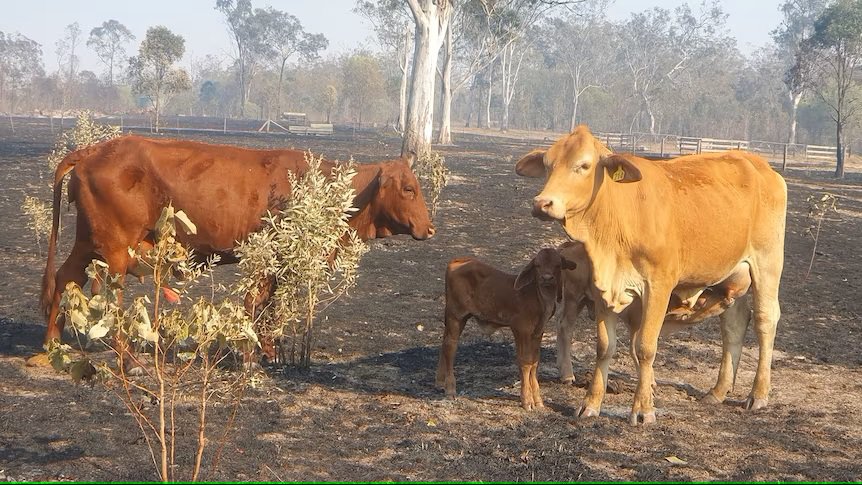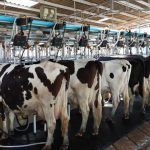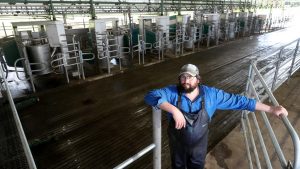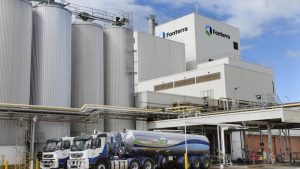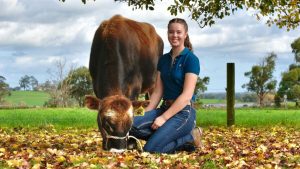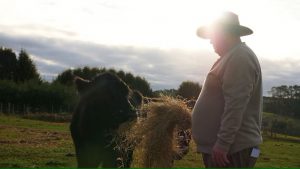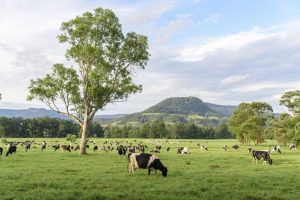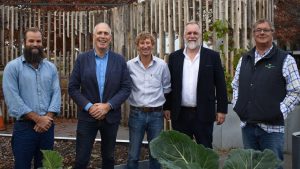
Key points:
- The fires across Queensland are burning through cattle pastures
- There’s limited hay on the market to feed livestock
- Producers can access state government support to help rebuild and restock after the fires
Grazier Robert Scanlan lost all his pasture in the Colosseum bushfire near Miriam Vale in central Queensland.
“We had to move [the cattle] out of the paddock just literally seconds before the flames hit,” he said.
After 32 years of breeding, Mr Scanlan was left with few options — to sell them or to buy feed for them.
“We can keep feeding them but there’s not enough hay around the country for that,” he said.
“We’re getting a lot of calls from people who want to come in, buy some, and take them away. We really appreciate that.”
Grazier Adam Coffey has been part of the firefighting effort at Colosseum.
Mr Coffey, Cattle Australia’s acting chief executive, said it was an all-too-common scenario.
“That’s going to be the biggest impact when we’ve already got a bit of a critical feed shortage,” Mr Coffey said.
According to peak industry body AgForce, more than 300,000 hectares of land have been razed by bushfires across Queensland this spring.
The Department of Agriculture and Fisheries is coordinating emergency fodder drops for affected producers to feed their cattle alongside AgForce and Rural Aid.
‘Bite the bullet’
About 300 kilometres to the south east, graziers in the Gympie region have had their driest October on record, only receiving 0.4 millimetres of rain compared with an average of 72mm for the month.
It’s almost a 180-degree change from last year when interest rates were low and producers had plenty of rain on their pastures.
“I’m getting a lot of phone calls from people wanting to buy feed but there’s no hay available in the local area,” Gympie District Beef Liaison Group president Jim Viner said.
He has urged graziers to “bite the bullet” and destock to prevent long-term damage to the land.
“Get the cattle off the paddock, so your country is not getting destroyed,” he said.
According to industry research and marketing body Meat and Livestock Australia, having too many animals on land in bad seasons could cause irreversible damage to soils and grasses.
Mr Viner said it was not just about being able to feed the cattle during the dry, but ensuring pastures could respond when the season improved.
“When rain does come, your country can recover a lot quicker,” he said.
“Some people have managed the dry so far pretty well.
“Some people have been overstocked nearly a year and their paddocks are in a very bad way.”
In the south-east, Mr Viner said there had been a rise of newcomers to the industry who were running livestock for the first time and facing their first drought.
His message to them was clear.
“You can’t just sit and hope for rain,” he said.
What to do and how to help
Primary producers affected by disaster can get state-government support: concessional loans up to $250,000 and freight assistance up to $5,000.
The 10-year loans can be used for repairing damaged equipment or farm buildings, replacing lost livestock, and replanting affected areas.
“These Disaster Assistance Loans are available to help our primary producers re-establish their operations as quickly as possible,” Queensland Agriculture Minister Mark Furner said.
The freight assistance can be used to get feed, building and fencing materials, machinery and equipment, or to transport livestock.
The state government has offered free mental health support and financial counselling as well as emergency hardship assistance and drought preparedness grants and loans.
The state government has established a website for people to donate to non-government organisations assisting people with bushfire recovery.
AgForce president Georgie Somerset said donations could be given to Rural Aid’s Buy a Bale campaign that provided feed to impacted graziers.
She said money given to Rural Aid could also be for on-the-ground psychological support.
“Producers are going to need more feed going forward,” she said.
“The difficulty of procuring that feed is the challenge for us now.”
